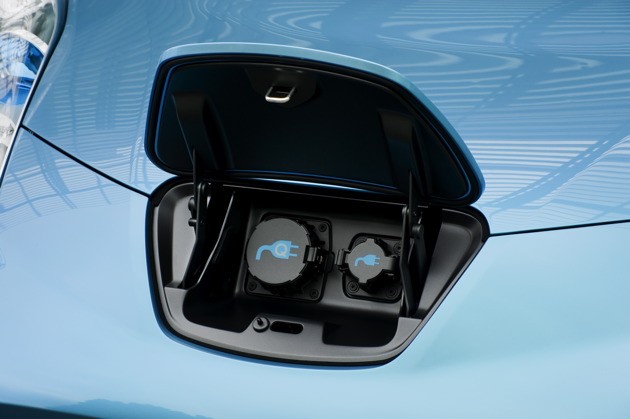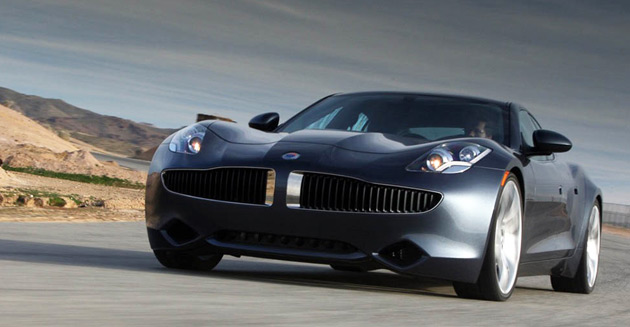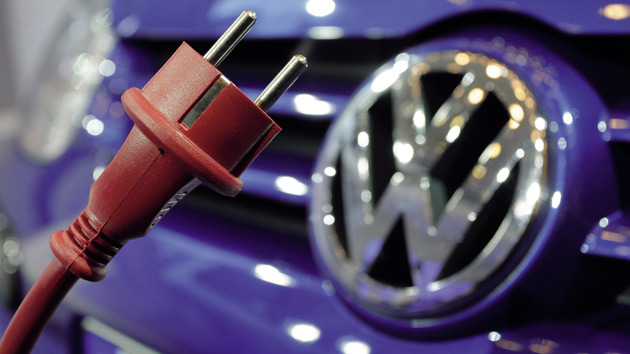One of our most popular posts in August was a piece that broke down how General Motors projected a fuel efficiency of 230 miles per gallon in the city for its 2011 Chevrolet Volt extended-range electric car.
Soon after GM's elaborate press event, Nissan announced with a straight face that their all-electric 2012 Nissan Leaf would obtain 230 miles per gallon. Which, according to a draft formula from the U.S. Environmental Protection Agency, it does.
There's just one problem: The Nissan Leaf has no engine. It is incapable of burning even a single gallon of gasoline.

General Motors' mysterious 230 logo

nissan leaf ev 030

Nissan LEAF Charging Port

Before the arrival of the low-cost model, Fisker plans to launch a more practical, family-oriented version of the Karma

gas pump

VW is actively developing its electric car technology but doesn’t expect to mass produce such vehicles until about 2015
"Mileage" for electric cars: needs work
Just to muddy the waters further, Fisker Automotive used a different measure yet--this one from the Society of Automotive Engineers (SAE)--when they calculated gas mileage of 67 mpg for their 2010 Fisker Karma plug-in hybrid sports sedan.
Which points out what the EPA has now admitted: The gas-mileage calculations for plug-in hybrid vehicles need some serious thought.
Helping consumers get it
The agency said in a letter yesterday that it is exploring ways to make the fuel economy ratings in advanced-technology vehicles more clear to consumers. In typical bureaucratese, it said it will "initiate a new rule-making to explore in detail the information displayed on the current fuel economy label and the methodology for deriving that information."
The EPA will seek input from scientists, researchers, automakers, and others about ways to deliver fuel efficiency ratings in ways that make intuitive sense to the car-buying public. Let us hope they have some consumer advocates in there, by the way.
MPG is stupid (still)
Making the whole issue even murkier is the problems with the miles-per-gallon scale, which (as regular GreenCarReports.com readers will know) we've written about before.
In brief, the MPG scale isn't linear: You save far more gallons of gasoline going from 10 mpg to 20 mpg for any given distance than you do from, say, 30 mpg to 40 mpg. (Over 100 miles, it's 5 gallons versus 0.8 gallon.)
Consumers get it very wrong
But more than half the public gets this completely wrong, as demonstrated in a study done by Duke University’s Fuqua School of Business. Management professors Richard Larick and Jack Soll's experiments proved that consumers thought fuel consumption was cut at an even rate as mileage increased.
Most survey respondents said going from 34 to 50 mpg saved more gasoline over 10,000 miles than did moving from 18 to 28 mpg, which is backwards. Their website, "The MPG Illusion," lays out the whole issue.
Focus on energy per distance?
So if the EPA wants to start somewhere, perhaps it could add to the current window sticker (showing a MPG rating for the city cycle, the highway cycle, and a combined number) some information on energy used to go a set distance. That energy can equally be expressed in gallons of gasoline or kilowatt-hours of electricity.
Along those lines, Israel's ETV Motors--which is developing a plug-in hybrid of its own--suggests giving buyers three pieces of information for cars that use both gasoline and electric propulsion:
- its range on a single battery charge (for the 2011 Volt, it's 40 miles);
- the energy-intensiveness of the battery (e.g. kilowatt-hours per 100 miles; for the Volt, it would be 20 kWh/100 mi); and
- how much gasoline it consumes once the battery is discharged (e.g. gallons per 100 miles).
The makers of Norway's Think City electric car, on the other hand, propose a rating more like the Energy Star ratings used for home appliances, along with an estimation of the annual cost to drive the vehicle.
Change the window sticker
Earlier this year, there were a few moves toward putting consumption on window stickers, right next to mileage.
Is it too much to hope that with the challenges of rating vehicles that blend power from electric storage and liquid fuels, we might just improve our understanding of how much energy our vehicles use?
Let us know your thoughts in the comments below.













